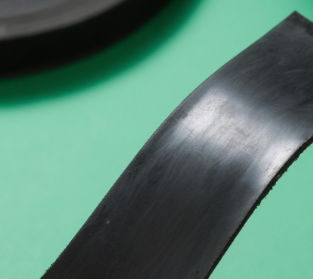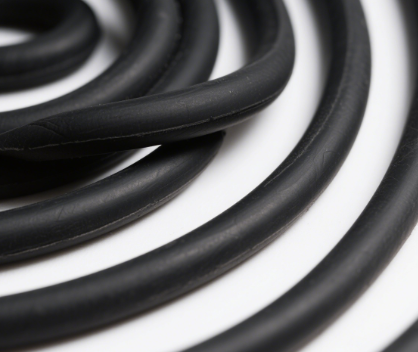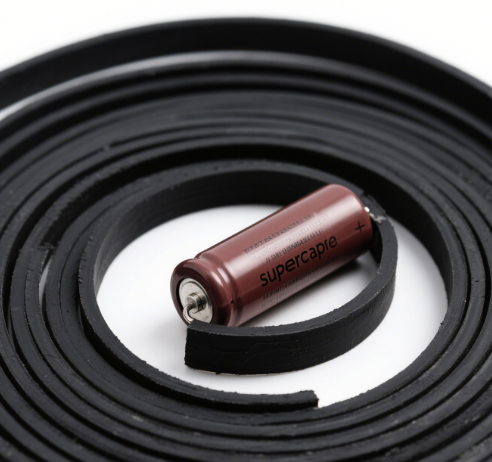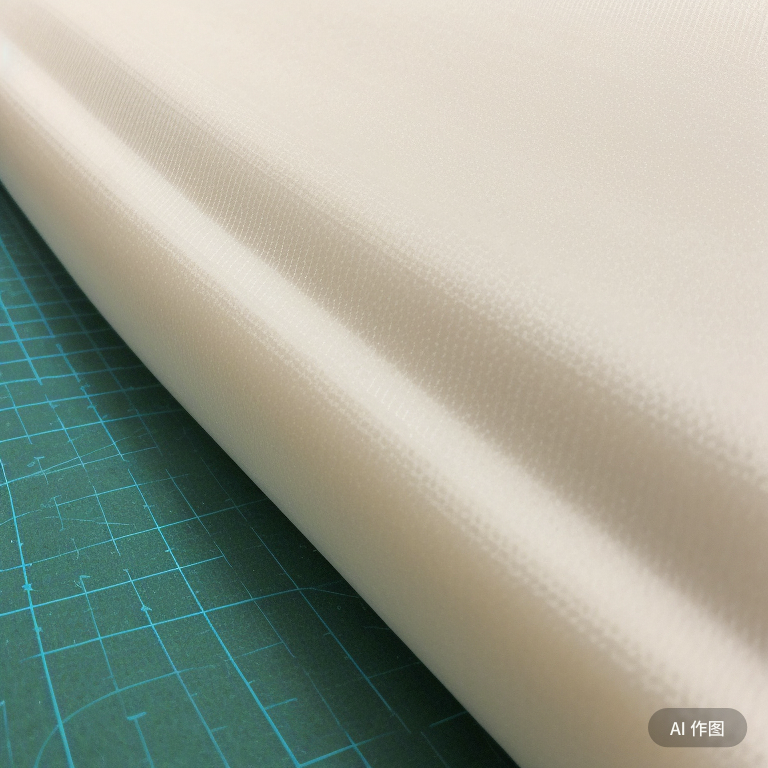conductive rubber with shape memory alloy
 The combination of shape memory alloy (SMA) and conductive rubber is a cutting-edge exploration in the field of materials science. It aims to integrate the intelligent actuation properties of SMA with the flexible conductive performance of conductive rubber, and develop multifunctional composite materials with shape memory, conductivity, sensing, and actuation functions. Currently, research in this field is still at the laboratory stage, and no mature commercial products have been formed yet. However, it has already demonstrated potential application values in fields such as flexible electronics, smart robots, and medical devices.
The combination of shape memory alloy (SMA) and conductive rubber is a cutting-edge exploration in the field of materials science. It aims to integrate the intelligent actuation properties of SMA with the flexible conductive performance of conductive rubber, and develop multifunctional composite materials with shape memory, conductivity, sensing, and actuation functions. Currently, research in this field is still at the laboratory stage, and no mature commercial products have been formed yet. However, it has already demonstrated potential application values in fields such as flexible electronics, smart robots, and medical devices.
- Technical Principles and Material Design
Shape Memory Alloy (SMA)
SMA represented by nickel-titanium alloy (NiTi) has unique thermally induced phase transformation characteristics: it appears in the martensite phase at low temperatures and can undergo plastic deformation; when heated above the phase transformation temperature, the material will recover its original shape through reverse phase transformation. This characteristic makes it an ideal choice for actuation components. For example, it can achieve adaptive deformation in medical stents and aerospace structural components.
Conductive Rubber
Conductive rubber is usually composed of elastic matrices such as silicone rubber and fluororubber compounded with conductive fillers (such as carbon nanotubes, graphene, and metal particles). By adjusting the type and content of the fillers, a balance between electrical conductivity and mechanical properties can be achieved. For example, the addition of carbon nanotubes can form a three-dimensional conductive network while maintaining the flexibility of the rubber.
Composite Material Design
The key to combining SMA with conductive rubber lies in interfacial compatibility and functional synergy. The current main research directions include:
SMA Particle/Fiber Filling: Uniformly disperse micron-sized SMA particles or fibers in the conductive rubber matrix. Utilize the phase transformation driving force of SMA to achieve the overall deformation of the material, and at the same time, transmit current or signals through the conductive rubber.
Layered Structure: Prepare layered composite materials with alternating stacking of SMA and conductive rubber. Drive the SMA layer to produce deformation through thermal stimulation or current, and then drive the deformation of the conductive rubber layer to achieve flexible actuation or sensing functions.
Surface Modification: Chemically treat the surface of SMA (such as oxidation, grafting) to enhance its interfacial bonding force with the rubber matrix and avoid debonding or failure during the deformation process. - Preparation Process and Performance Characteristics
Preparation Methods
Mixing Method: Mix SMA particles with the rubber matrix and conductive fillers through a two-roll mill or internal mixer, and then form them by vulcanization. For example, the patent mentions mixing nickel-titanium alloy particles with silicone rubber and carbon nanotubes, and preparing conductive shape memory composite materials through compression molding and vulcanization.
Coating Method: Spray or coat a layer of conductive rubber on the surface of SMA to form a core-shell structure. For example, coating the surface of SMA wire with silicone rubber containing silver nanoparticles to achieve the integration of conductivity and shape memory functions.
3D Printing: Use fused deposition modeling (FDM) or stereolithography technology to directly print the composite structure of SMA and conductive rubber, realizing customized manufacturing of complex shapes.
Performance Challenges
Interfacial Bonding Strength: The thermal expansion coefficients of SMA and the rubber matrix differ greatly, and interfacial debonding is likely to occur during cyclic deformation, affecting the stability of the material.
Stability of Electrical Conductivity: The phase transformation process of SMA may lead to the destruction or reconstruction of the conductive network, thus affecting the consistency of the electrical conductivity.
Response Speed and Energy Consumption: The phase transformation of SMA requires external heating (such as current Joule heating), and the response time is usually in the order of seconds, and the energy consumption is relatively high, which limits its application in fast actuation scenarios.
III. Potential Application Areas
Flexible Sensors and Actuators
Pressure/Strain Sensors: Utilize the resistance change of conductive rubber to sense deformation, and combine it with the self-actuation ability of SMA to achieve real-time monitoring of human body movements or physiological signals in wearable devices. For example, integrating an SMA conductive rubber sensor in a smart bracelet can simultaneously detect the bending angle of the wrist and the pulse signal.
Soft Robots: Make SMA conductive rubber into bionic muscles or tentacles, and achieve controllable deformation through current driving, which can be used in minimally invasive medical surgical instruments or rescue robots.
Smart Structures and Adaptive Systems
Aerospace Field: Embed SMA conductive rubber composite materials in wings or satellite antennas, and adjust the shape of the materials through temperature or current to achieve aerodynamic optimization of aircraft or autonomous deployment of antennas.
Automotive Industry: Used in adaptive suspension systems or smart seals, which can automatically adjust their shapes according to driving conditions to improve the comfort and fuel efficiency of vehicles.
Medical and Biomedical Engineering
Degradable Medical Devices: Develop temporary implants based on biocompatible SMA (such as magnesium alloy) and conductive rubber, which can be triggered to degrade by body temperature after the treatment is completed, reducing the risk of secondary surgery.
Rehabilitation Aids: Design wearable rehabilitation gloves, and use the actuation function of SMA conductive rubber to assist patients in passive training of finger joints.
- Research Status and Commercialization Progress
Academic Research
The research team of Carnegie Mellon University in the United States has developed a shape memory elastomer (LCE) containing liquid metal, which combines electrical conductivity and shape memory effect, providing a new idea for the combination of SMA and conductive rubber.
Domestic research teams have prepared composite materials with both shape memory and electrical conductivity by compounding nickel-titanium alloy particles with carbon nanotubes/silicone rubber, and the resistance change rate can reach more than 150%.
Commercial Exploration
Currently, there are no mature SMA conductive rubber products on the market, but some enterprises have begun to lay out related technologies. For example, Jiangsu Tiannai Technology focuses on the research and development of carbon nanotube conductive paste, which may provide key materials for SMA conductive rubber.
International companies such as Wacker Chemie and Dow Inc. dominate the field of conductive silicone rubber, and in the future, they may expand to the SMA composite field through technological integration. - Challenges and Future Directions
Technical Challenges
Material Compatibility: It is necessary to further optimize the interfacial design between SMA and the rubber matrix to improve the mechanical strength and cyclic stability of the composite material.
Energy Consumption and Response Speed: Explore low-voltage driving or photothermal response mechanisms to reduce energy consumption and shorten the response time.
Large-scale Preparation: Develop efficient and low-cost production processes to meet the needs of industrial production.
Future Directions
Multi-field Coupling Response: Combine the driving of multiple physical fields such as heat, electricity, and magnetism to achieve multi-functional coordinated regulation of materials.
Biocompatibility and Degradability: Develop biodegradable SMA conductive rubber suitable for the medical field to expand its application in in-vivo implants.
Intelligent Integration: Integrate SMA conductive rubber with sensors, microcontrollers, etc. to construct a closed-loop intelligent system, such as self-healing electronic skin or smart building structures.
Conclusion
Shape memory alloy conductive rubber is a highly promising intelligent material. It combines the actuation ability of SMA with the flexible conductive characteristics of conductive rubber, bringing new possibilities to fields such as flexible electronics, robotics, and medicine. Although it still faces challenges in material design, preparation process, and performance optimization, with the continuous progress of nanotechnology and 3D printing technology, this field is expected to achieve breakthrough progress in the next decade and promote the commercial application of intelligent materials.
















